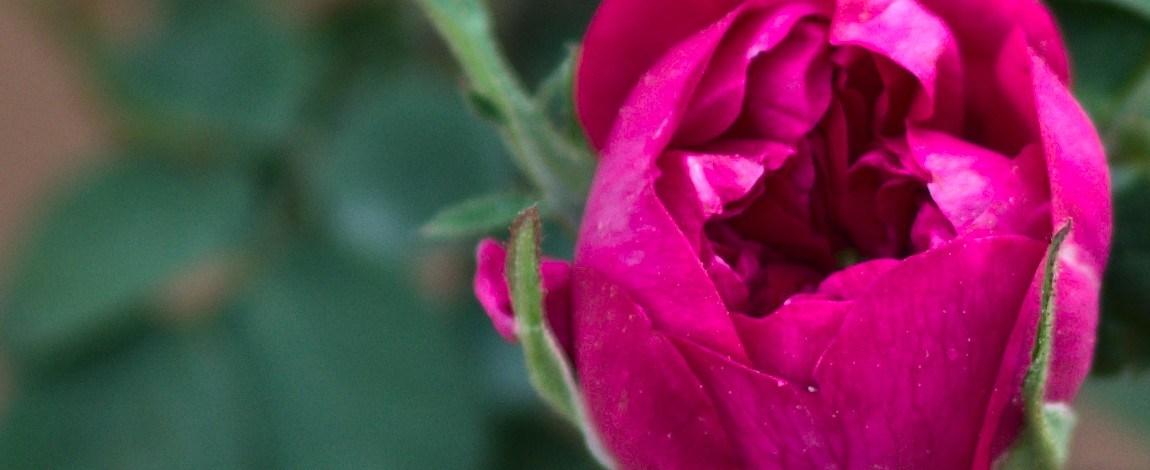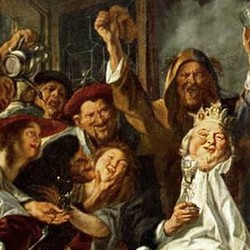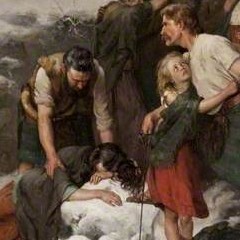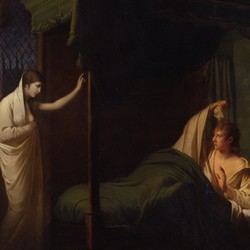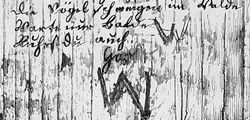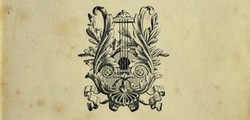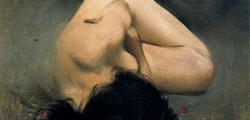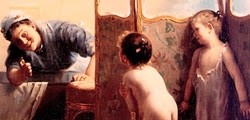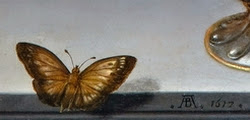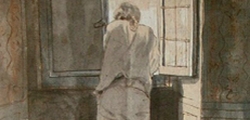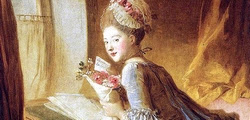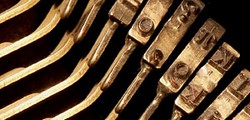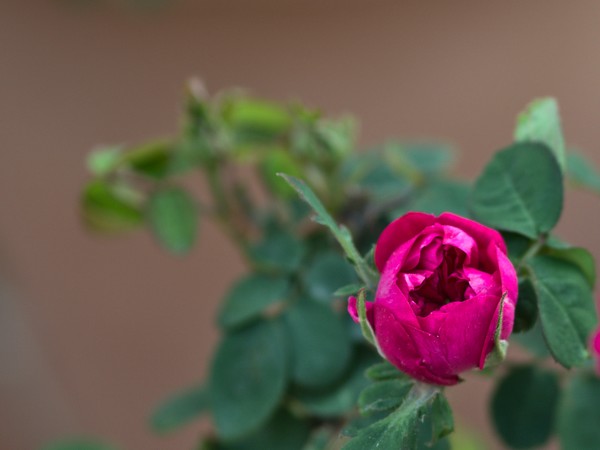
A few days ago, when I was finishing last week's article on Red Roses and Red Noses, I read a detail about the song that I had missed until then. On the booklet of "My Garden" (the CD from which I extracted the interpretation I shared), Richard Stokes said that Lord Berners' song was clearly a parody of Thomas Moore's song The Last Rose of Summer. I thought first I'd make a quick reference to it in that article, but then I thought, why not dedicate this week's article to this song?
We have spoken several times about George Thomson, the Scottish music publisher who, in the late 18th century, began publishing arrangements of traditional songs. Thomson knew his business very well, and he knew how to choose both the musicians who would harmonize the pieces (Haydn and Beethoven among them) and the poets who would write the texts that would replace the originals, who were not considered sufficiently refined (Robert Bruns or Walter Scott, for example). This practice would today make musicologists and ethnographers put their hands on their heads, but the fact is that thanks to Thomson and other publishers who imitated it, a many songs have been preserved that would otherwise been lost.
Thomson appears to have asked Thomas Moore to become one of his author, but the Irish poet refused the invitation. Several reasons for this rejection have been given; it seemps that Moore thought that Thomson suggested many changes to his friend Burns, so as the poems were more public-like, and he was unwilling to do so. It is also said that economic conditions did not satisfy him (and we know from other authors that Thomson paid very well). And finally, it seems that Moore wanted to do for Irish music what Robert Burns had done for Scottish music, but he wanted to do it his own way.
Moore worked with Irish publishers William and James Power, who between 1808 and 1834 published the ten volumes of the Irish Melodies (to be precise, from 1821 on, only James appeared as publisher), all of them with poems by Thomas Moore replacing the original text. Most of the melodies were collected by Edward Bunting, a musician pioneering in the collection of Irish folklore, who did a very rigorous job. Harmonizations were first by John Stevenson and then, in the last three volumes, by Henry R. Bishop. The Irish Melodies, one hundred and twenty-four pieces in total, were enormously successful; the customers were anxious as he waited for every new volume. In fact, it is Moore's most famous work; his songs (note that composers' names were systematically neglected) also provided him with enormous gains, which did not prevent the poet from always being in debt.
Of all Irish Melodies, the most famous, at least outside Ireland, is The Last Rose of Summer, published in 1813 in volume 5, whose music is the traditional Irish song Aisling an Óigfhear, or The Young Man's Dream, and it is known exactly when, where and why Moore wrote the poem. It was in 1805, during a stay on a state called Jacksontown House, in Kilkenny, south-east Ireland. He was struck by a rose from the "Old Blush" variety, which is nowadays very popular and can be easily found, but which had been introduced to the UK only ten years before. It is a very long flowering rose bush, with not very large, aromatic semi-double roses growing in clusters. When it blooms, the roses are pale pink, but they turn eventually darker, a detail that Moore does not overlook in his poem, where he speaks (at his 26!) of the sad fate of aging alone, when all the people you have loved have left. Hence Lord Berners's response/parody, a cheerful invitation to drink and not to think of death.
Many versions of The Last Rose of Summer have been made in many musical genres. I will mention a few, focusing only on the classical genres. To begin with we have Beethoven's song, one the arrengements he wrote for Thomson for voice, piano, violin and cello; Thomson wasn't allowed to use Moore's poem, so he used William Smyth's poem; you will find the song under the title Sad and Luckless was the Season and it is worth listening to because it is really beautiful. Around 1827, Felix Mendelssohn wrote his Fantasia on "The Last Rose of Summer", for piano, and this tells us that Thomas Moore's piece was quickly spreading. So quickly that Friedrich von Flotow included it in 1847 in his opera Martha with the title Letze Rose, as a folksong (and we know that it wasn't exactely). If we keep moving forward in time, we find that Charles Gounod, who went to London during the 1871-72 season and conducted the Royal Albert Hall choir on several occasions, composed or arranged several pieces for the occasion, including, of course, The Last Rose of Summer. There is one more version for solo piano, a canon for four voices composed in 1903 by Max Reger, and finally arrives at Benjamin Britten.
Britten published six volumes of arrangements of folksongs, sixty-one in total. The Volume No. 4 (1958) is dedicated to Moore's Irish Melodies, and the penultimate song, the ninth, is The Last Rose of Summer. It's a version that I like very much, among other things, because it counteracts the (to me) excessive sugar of the song. You know, I don't have much of a sweet tooth... And I like very much, andA few days ago, when I was finishing last week's article on Red Roses and Red Noses, I read something about the song I had missed until then: Richard Stokes stated in the booklet of "My Garden" (the CD from which I extracted the interpretation I shared) that Lord Berners song was clearly a parody of Thomas Moore's song The Last Rose of Summer. I thought I would make a quick reference to it in that article, but then I thought, why not dedicate this week's article to this song?
We've talked about George Thomson before, the Scottish music publisher who started publishing arrangements of traditional songs in the late 18th century. Thomson knew his business very well, and he knew how to choose both the musician who would harmonize the pieces (Haydn and Beethoven among them) and the poets who would write the new texts (Robert Bruns or Walter Scott, for example), given that the original lyrics were not considered refined enough. This practice would today make musicologists and ethnographers put their hands on their heads, but the truth is that thanks to Thomson and other publishers who imitated it, many songs have been preserved that would otherwise be lost.
Thomson appears to have asked Thomas Moore to become one of his authors, but the Irish poet refused the invitation. Several reasons for this rejection have been given; it seems that Moore thought Thomson suggested too many changes to his friend Burns so that the poems were more public-like, and he was unwilling to do so. It's also said that the economic conditions didn't make him happy (and we know from other authors that Thomson paid well). And finally, it seems that Moore was interested in doing what Robert Burns had done for Scottish music, but he wanted to do it his own way.
Moore worked with Irish publishers William and James Power, who between 1808 and 1834 published the ten volumes of the Irish Melodies (to be precise, from 1821 on, only James appeared as publisher), all of them with poems by Thomas Moore replacing the original lyrics. Edward Bunting, a musician who pioneered in the collection of Irish folklore, collected most of the melodies; the first harmonizations were made by John Stevenson, and then, in the last three volumes, by Henry R. Bishop. The Irish Melodies, one hundred and twenty-four pieces in total, were immensely successful; customers were anxious as they waited for every new volume. It is, in fact, Moore's most famous work; his songs (note that composers' names were systematically neglected) also provided him with enormous gains, which did not prevent the poet from always being in debt.
Of all Irish Melodies, the most famous, at least outside Ireland, is The Last Rose of Summer, published in 1813 in volume 5. It's music is the traditional Irish song Aisling an Óigfhear, or The Young Man's Dream, and we know exactly when, where and why Moore wrote the poem. It was in 1805, while he was staying at Jacksontown House in Kilkenny, south-east Ireland. He was struck by a rose from the “Old Blush” variety, which is now very popular and easy to find, but which had only been introduced to the UK ten years before that. It is a very long flowering rose bush, with medium, aromatic semi-double roses that in clusters. When they bloom, roses are pale pink, but they turn eventually darker, a detail that Moore does not overlook in his poem. A poem where the poet speaks (at his 26!) about the sad fate of ageing alone, when all the people you loved once have left.The response/parody of Lord Berners was a cheerful invitation to drink and not think of death..
Many versions of The Last Rose of Summer have been made in many musical genres; here are a few, focusing only on the classical genres. To begin with we have Beethoven's song, one of the arrangements for voice, piano, violin and cello he wrote for Thomson; Thomson wasn't allowed to use Moore's poem, so he used William Smyth's poem. It's title is Sad and Luckless was the Season, and it is worth listening to it because it is really charming. Around 1827, Felix Mendelssohn wrote his Fantasia on “The Last Rose of Summer”, for piano, and this tells us that Thomas Moore's piece was quickly spreading. So quickly that Friedrich von Flotow included it in 1847 in his opera Martha with the title Letze Rose, as a folksong (and we know that it wasn't exactly). If we keep moving forward in time, we find Charles Gounod, who was in London during the 1871-72 season and conducted the Royal Albert Hall choir several times. He composed or arranged various pieces for the occasion, including, of course, The Last Rose of Summer. There is one more version for solo piano, a canon for four voices composed in 1903 by Max Reger, and finally we arrive at Benjamin Britten.
Britten published six volumes of arrangements of folksongs, sixty-one in total. The Volume No. 4 (1958) is dedicated to Moore's Irish Melodies, and the penultimate song, the ninth, is The Last Rose of Summer. It's a version that I like very much, among other things because it counteracts the (to me) excessive sugar of the song. You know, I don't have much of a sweet tooth… And I like very much, and I find it really moving, our performance, with Britten himself at the piano and tenor Peter Pears.
You see, this year St. George's roses have lasted longer than usual. And the rose season just started, let's enjoy the spectacle!
‘Tis the last rose of summer,
Left blooming alone;
All her lovely companions
Are faded and gone;
No flower of her kindred,
No rosebud is nigh,
To reflect back her blushes,
Or give sigh for sigh.
I’ll not leave thee, thou lone one!
To pine on the stem;
Since the lovely are sleeping,
Go, sleep thou with them.
Thus kindly I scatter,
Thy leaves o’er the bed,
Where thy mates of the garden
Lie scentless and dead.
So soon may I follow,
When friendships decay,
And from Love’s shining circle
The gems drop away.
When true hearts lie withered,
And fond ones are flown,
Oh! who would inhabit
This bleak world alone?


